Matador Network's Blog, page 670
April 14, 2021
Israel is opening to vaccinated travelers on May 23
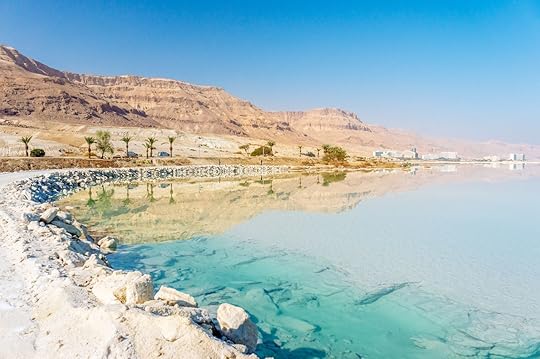
Israel is reopening to international travelers just in time for summer. Starting May 23, the country will start welcoming vaccinated visitors as part of a phased approach.
The first phase will allow a limited number of tour groups to visit, and the number will increase based on the country’s evolving COVID-19 situation. At a later reopening date in July, individual vaccinated travelers will be allowed to enter. For all phases, vaccinated visitors must still provide evidence of a negative PCR test before entering the country, and a serological test upon arrival to prove their vaccination.
Eyal Carlin, tourism commissioner for North America, said in a statement, “We have been working to develop a plan that allows not only for the country to reopen to visitors, but also to ensure that everyone stays safe. We have come so far, and it is for this reason we are adapting this proactive strategy of having a phased opening. Sixty percent of Israel’s population has been vaccinated and with the United States and Israel using the same vaccines, we are hopeful that by summer we can open our doors wide and welcome every visitor to Israel who would like to come.”
Israel has been among the quickest countries in the world to vaccinate its citizens, putting it in a good position to reopen safely for tourism. 
The post Israel is opening to vaccinated travelers on May 23 appeared first on Matador Network.

April 13, 2021
Fly domestic for just $50 in honor of Southwest’s 50th anniversary

Southwest Airlines is celebrating its 50th birthday this year, which spells equally exciting news for travelers in the form of a major sale. In honor of its golden anniversary, the airline is slashing prices on domestic flights to and from cities like Los Angeles, Chicago, Atlanta, and Nashville, offering one-way tickets for as little as the fitting price of $50.
Some of the best $50 deals include flights between Atlanta and Nashville or Memphis, New Orleans and Houston, Chicago and Pittsburgh, Los Angeles and San Francisco or Las Vegas, and Baltimore and Charlotte. Check out even more deals on the Southwest website, whether you’ve got your eye on Boston, Fort Lauderdale, Austin, or elsewhere.
The sale is on from now to May 3, 2021, and applies to flights scheduled between May 3 and May 26 or September 7 and November 5, exempting the blackout dates of October 11 through November 1. Fares are not refundable but can be used toward later flights as long as travelers cancel at least 10 minutes before departure, so there’s no reason not to book now.
And to that, we say happy 50th, Southwest, and happy travels to everyone else! 
The post Fly domestic for just $50 in honor of Southwest’s 50th anniversary appeared first on Matador Network.

The ultimate floating tour through Montana, from Yellowstone to Glacier National Park
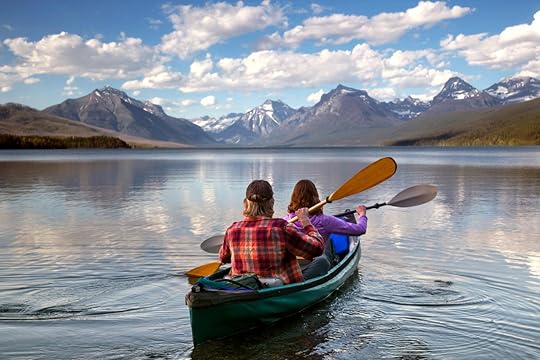
With summer just around the corner, the pressure is on to start trip planning for the warm weather season. This float tour of Montana checks off all the summer essentials combining warm sun, beautiful waterways, mountain backdrops, and outdoor adventure.
“Floating” is a local slang term describing the activity of launching a small watercraft into a lake or river, and letting the current take you down the waterway. Exploring Montana by float is an awesome way to experience the beauty this state has to offer and is a staple summer pastime for both locals and visitors.
The state truly is a floating paradise, from Missoula’s downtown urban area to the wild waters of Glacier National Park. This journey below is a northbound route starting in West Yellowstone and traveling towards Glacier National Park. They can be explored individually as day trips, or linked together into a state-wide summer road trip.
What you need to bringA sturdy watercraft is essential on a float trip. Something like an inflatable paddleboard, kayak, or small boat. A tough innertube will work as well.
Cheap floaties designed for the pool or very light use will most likely end up getting popped by the rocks or branches you encounter along the way and you will be stranded without floatation. Also keep in mind that though the water is warmer in the summer, a lot of these locations are still glacier-fed, meaning the water is still uncomfortably chilly. You will want to get out of the water to warm up, and a quality float will help you stay lifted out of the water enough to enjoy the experience goosebump-free.
In addition to floatation devices, multiple paddles are also helpful to steer yourself down the river. This is especially true for larger groups, if you’re headed towards a boulder or obstruction, you need to be able to steer the floats to clear water. Also getting around is nearly impossible without a paddle in a lake or a slow-flowing river.
Good quality footwear should also be on your essentials list, don’t make the mistake of leaving your shoes in the car before a trip. There may be shallow stretches where you need to get out of your float and walk or carry your gear to the next deeper section. Most of Montana’s rivers have a rocky bottom and fumbling around on flip-flops will probably leave you with some bruised toes and make it tough to walk safely.
Pack your fly fishing gear if you want to try out float fishing during your time on the river. Fly fishing for trout is popular all over Montana in the summer and you will probably encounter fishing parties along your river route. To fish in Montana, you will need to purchase a fishing license and carry it with you, as well as checking the catch regulations for the area you plan to fish.
Water, snacks, and sunscreen are always a good idea to pack for your trip. Please be cautious when packing your supplies — put them into a dry bag and tie everything down properly to avoid polluting these beautiful places, especially with easy to lose items such as empty cans.
The best floating spots in MontanaCliff Lake and Wade Lake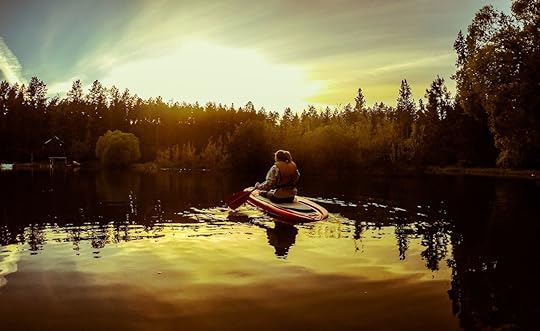
Photo: Wirestock Creators/Shutterstock
The lakes Cliff and Wade are located just outside of West Yellowstone and feature some of the bluest waters Montana has to offer. Set in a pine forest, the lakes have white sand bottoms which contribute to their blue color and are surrounded by natural rolling hills.
Cliff and Wade are close enough to each other that you could see them both in a day if desired, however, they are also quite large, and you could easily spend several hours paddling around exploring their islands and shorelines to make a longer trip. It’s worth keeping in mind that there is no current, so you will have to paddle back to the boat ramp where you began to get back to your vehicle. Boats are allowed on the water, but they must follow a no-wake speed limit, which maintains a very peaceful atmosphere on the lake and is safe for paddle-only crafts and swimmers.
In addition to paddling, visitors can hike, birdwatch, or fish on the lake. Some visitors even scuba dive here, made possible by the clarity of the water. Local wildlife is also a treat, look out for bald eagles, trout, and river otters during your paddle, and deer and moose during hikes. There are two minimalist campgrounds (no power, vault toilets, drinking water only) on-site that fill up quickly if you want to camp close by. The weekends are more crowded, and sites are first come first serve, so plan accordingly. If you roll in late in the afternoon, you may not be able to get a spot. On the plus side, camping fees are currently a very reasonable $15 per night, cash or check only.
Gallatin River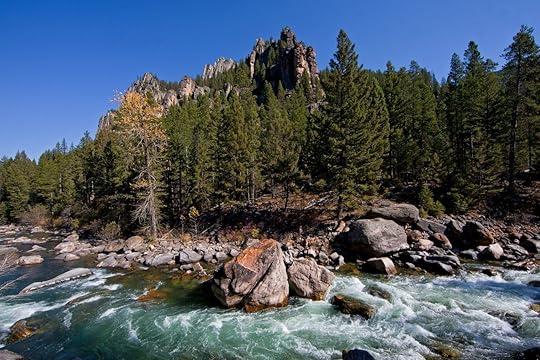
Photo: Damon Callisto/Shutterstock
The first flowing river to mention is Gallatin River located near Big Sky. This trip is not a lazy river or a relaxing summer afternoon jaunt and you will need to book a guided trip to enjoy it safely.
The Gallatin is a white water river, with rapids varying in intensity along its course. That means dangerous boulders, big waves, and currents to contend with. The river is most famous for its most perilous section, ‘The Mad Mile’. White water rapids are classified by level of difficulty on a scale from Class 1 (easy) to 6 (expert) and ‘The Mad Mile’ is rated as a Class 4, making it an exceptionally long stretch of turbulent whitewater. If you’re ready for an adrenaline-filled afternoon, booking a guided trip is the safe way to explore this wild river. Local company Montana White Water offers trips of varying intensities to suit your group’s needs. They provide all the gear, shuttles, and most importantly, experienced paddle guides to ensure you have a fun, safe trip on the river.
In addition to the Gallatin River, the town of Big Sky has many beautiful areas for outdoor hiking and exploring. The Beehive Basin trail as well as the Lava Lake trail are quintessential alpine summer hikes and are worth checking out while you’re in the area.
Madison River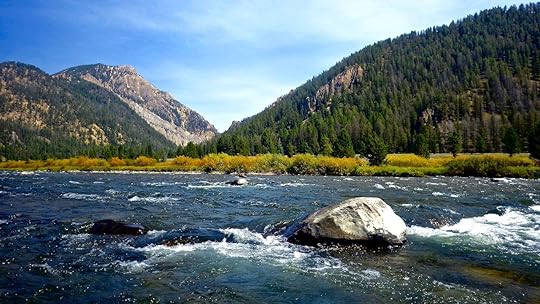
Photo: DMartin09/Shutterstock
Heading north toward the city of Bozeman comes the next river float on the list, Madison River. This river is frequented by groups of floaters, and has a nice slow pace, making it a great beginner-level float to practice your river skills. It also stays deep enough to float all summer long, and the only obstacles to avoid are the occasional large, obvious boulder.
The entire float takes about 2-3 hours, or you can extend the time by hopping out on the little islands dotting the river. This float follows a highway for most of its route beginning at the Warm Spring Boat Launch and ending at the Black’s Ford fishing access point. Both points are usually very busy, and you may have to wait for a parking spot to open up to start your trip.
Float groups will shuttle between the two points by leaving a car at the endpoint and then driving back to the start point with all of their gear. However, if you only have one car, you can probably catch a ride on a busy day back to the start point with another group of floaters.
If you’re interested in a pre-planned float trip, local company Madison River Tubing offers float packages that include all of the gear you need as well as the shuttle ride between trip points.
Clark Fork River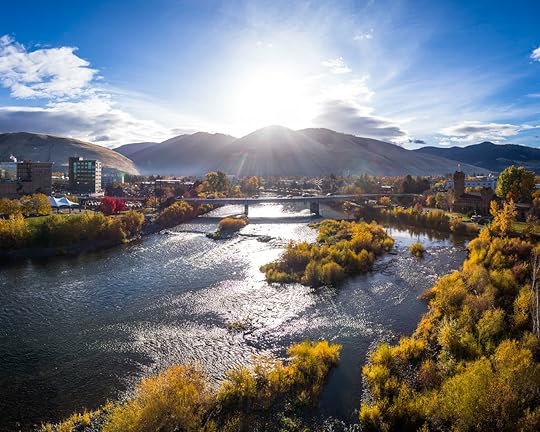
Photo: Keegan Connell/Shutterstock
After tackling the Madison River, head to Clark Fork River in Missoula. The entry point for this river is the Sha-Ron river access point right outside of town. This popular river passes right through the town of Missoula, by the University of Montana’s football stadium as well as a riverside off-leash dog park.
Even though this is a more urban river, it’s still flowing through wild Montana, so watch for river otters on the shores and bald eagles overhead during your trip. Expect this float trip to take around 2-3 hours as well.
This option is very beginner-friendly, with little to no obstacles to dodge during the trip, however, it does end in a rather surprising way at a human-engineered white water section called Brennan’s Wave. This artificial wave gives kayakers and surfers white water rapids conveniently located in downtown. The wave was built in honor of a local man, Brennan Guth, who sadly passed away while kayaking in 2001, and it has since grown into a Missoula attraction. Make sure you hop out before this section if you’re not an experienced swimmer or paddler.
Clearwater River Canoe Trail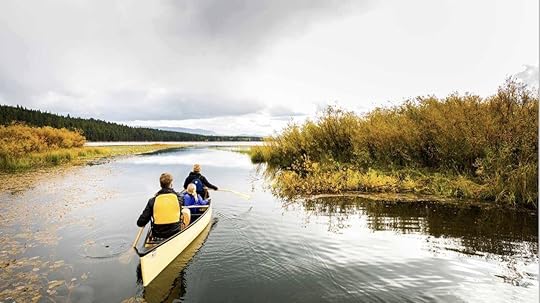
Photo: Visit Montana
Next up on the map is the Clearwater River Canoe Trail. This float is completely different from all of the others on this list because of its location in a willow marsh. It is a shorter trip, about 3.5 miles long, but the scenery is amazing.
The willows grow on either bank of the skinny winding river, creating a tunnel effect. The water here is very clear and turtles and fish can be spotted swimming under the surface and the willow marsh provides a habitat for an abundance of bird species.
When you are planning for this trip, consider bringing a kayak, paddleboard, or some type of small paddle craft instead of a tube. The river is very slow flowing and paddling is much easier than trying to keep a tube moving in the slow currents.
At its endpoint, the river empties into Seeley lake, and you will need to paddle on a short distance to reach the parking lot at the ranger station.
Another great thing about this float trip is that it can easily be done with only one vehicle. A one-mile nature trail connects the start point and the endpoint, making it a breeze to take a quick hike back to fetch your vehicle from where you began.
Middle Fork Flathead River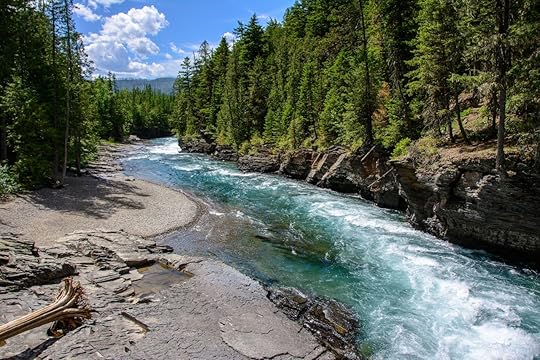
Photo: Maks Ershov/Shutterstock
The Middle Fork of the Flathead River is located outside the town of West Glacier and forms the Southwestern Boundary of Glacier National Park. This river is a little more challenging than others previously mentioned. Expect to encounter a few obstacles such as downed trees, or shallow points, but the effort, in this case, is worth the payoff.
The glacier melt that feeds the river influences its color, the waters are a bright blue. This is caused by minerals and sediments released from the ice as it melts and gets deposited into the river. This float even has a little bonus canyon section towards the end where the river has eroded its banks into a small slot canyon.
The whole float takes about 2.5-3 hours, longer with breaks added in to swim or explore. The put-in location is at the West Glacier river access boating site and is also used by the various guided river trips. The area is a large pebble beach, which helps to eliminate congestion during busy times.
The take-out location is also a pebble beach and shoreline, large enough to allow for camping right by the river. This spot is the most convenient free camping near Glacier National Park, so there are usually many campers here preparing to explore the park and enjoy its many outdoor adventure opportunities. 
The post The ultimate floating tour through Montana, from Yellowstone to Glacier National Park appeared first on Matador Network.

7 peaceful, wacky, and adorable museums to check out in Japan

Around the world, museums tend to showcase similar items, such as paintings, sculptures, and historical artifacts. While those are fascinating and due respect in their own right, a fresh take is always welcome. With Japan being one of the most creative and innovative countries out there, it comes as no surprise that it has taken the very concept of a museum and turned it into something more. From a museum that lets you create your very own instant noodles to the famed Ghibli Museum, here are some of the most unique museums in Japan.
1. Towel Museum of Art
Photo: Ehime Prefecture
The Towel Museum of Art is the world’s first museum dedicated to towel manufacturing. There are exhibits on the towel-making process, displays of various traditional towels, and even a section that focuses on works of art made out of towels. The museum also brings pop culture into the mix with fun things like a Moomin — a Finnish cartoon series that focuses on a family of trolls — gallery on its top floor and rotating exhibits on series like Winnie the Pooh.
Where: 甲2930 Asakurakami, Imabari, Ehime 799-1607
2. Omiya Bonsai Art Museum
Photo: khuntapol/Shutterstock
The Omiya Bonsai Village is a small, quiet neighborhood originally settled in 1925 by bonsai gardeners and other garden industry workers who were displaced by the Great Kanto Earthquake of 1923; they chose the area specifically for its access to clean water and rich soil. At the center of it all is the Omiya Bonsai Art Museum, home to over 120 pieces of bonsai art and other related artifacts like pots, books, and woodblock prints.
Where: 〒331-0804 Saitama, Kita Ward, Torocho, 2 Chome−24−3
3. Cup Noodles Museum
Photo: Supachai Panyaviwat/Shutterstock
The Cup Noodles Museum is dedicated to Japan’s ubiquitous instant noodles. It chronicles the history of the food, which was first invented by Momofuku Ando in 1958. There are several permanent exhibits, ranging from the standard and informational to the more interactive.
In “Traces of Momofuku Ando,” visual images, testimonials, and personal effects from Ando himself are used to paint a picture of the man. In “The Birth of Chicken Ramen,” there’s a recreation of the shed where Ando created the first instant noodle flavor, chicken ramen. Another exhibit looks at the global impact of Cup Noodles around the world, with consumption figures and colorful displays of the many flavors available.
Visitors also have the opportunity to make their own chicken ramen from scratch at the Chicken Ramen Factory part of the museum. The Cup Noodles Factory offers the unique chance to create personal Cup Noodles packaging and then fill it up with one of the soups available.
Where: two locations, 8-25 Masumicho, Ikeda, Osaka 563-0041 and 2 Chome-3-4 Shinko, Naka Ward, Yokohama, Kanagawa 231-0001
4. The Sand Museum
Photo: Sand Museum
Founded in 2006, the Sand Museum is the world’s only indoor museum dedicated to sand sculptures. It’s based specifically in Tottori because the prefecture is the location of Japan’s largest dune system, which spans nearly 10 miles of coastline. However, the sand used for the sculptures is recycled from local road construction projects as it shares the same quality as the sand dunes.
The museum rotates the sculptures on display annually, though all are centered around the theme of traveling around the world. From specific countries to entire regions, the incredible and intricate sculptures will showcase different aspects of an area. The museum’s first exhibit was focused on Italy and the Renaissance, with sand sculptures of famous Italian buildings and statues, while the most recent one took visitors to South Asia, with sculptures of Gandhi, the Taj Mahal, and Hindu mythology.
Where: 2083-17 Fukubecho Yuyama, Tottori, 689-0105
5. Zao Kokeshi Museum
Photo: takeph/Shutterstock
Kokeshi are simple wooden dolls, the making of which is a traditional Japanese craft that originated in the northern part of the country. While they generally have no arms or legs, the overall shape and facial features vary from region to region. A museum with the largest collection of kokeshi in Japan is located in Zao, with over 5,000 dolls on display. In addition to the kokeshi themselves, kokeshi artisans sometimes visit to give demonstrations and allow visitors to paint their very own doll.
Where: Shinchinishiurayama-36-135 Togattaonsen, Zaō, Katta District, Miyagi 989-0916
6. Cat Museum
Photo: Anucha Cheechang/Shutterstock
Cats are highly popular in Japan, from having them as actual pets to depictions of them in the media. The Cat Museum in Shizuoka is an ode to that love and was established as a place to study cats while playing with them. On the learning side, there are skeletal recreations of different types of cats, from saber-toothed tigers down to the domesticated house cat, so that visitors can see the evolutionary progression of the species. Also on display are cat toys, dolls, and other ways cats have appeared in Japanese culture — like the lucky cat. On the playful side, there is a myriad of real cats roaming the premises, all of which can be interacted with.
Where: Ito, Shizuoka Prefecture
7. Ghibli Museum
Photo: cowardlion/Shutterstock
No Japan museum list would be complete without a mention of the museum that showcases the work of the esteemed Studio Ghibli. The animation studio is well-known for films like Spirited Away, Howl’s Moving Castle, and Princess Mononoke. The building and its grounds are designed to look like they’re straight out of one of the studio’s films, though the interior remains a bit of mystery as visitors are not allowed to take photos or videos inside. The exhibits detail the studio’s history, as well as that of its films and animation techniques. It also has a cafe, children’s play area, rooftop garden, and a theater where original short films created exclusively for the museum are shown.
Where: Shinchinishiurayama-36-135 Togattaonsen, Zaō, Katta District, Miyagi 989-091 
The post 7 peaceful, wacky, and adorable museums to check out in Japan appeared first on Matador Network.

West Virginia will pay remote workers $12,000 to move there
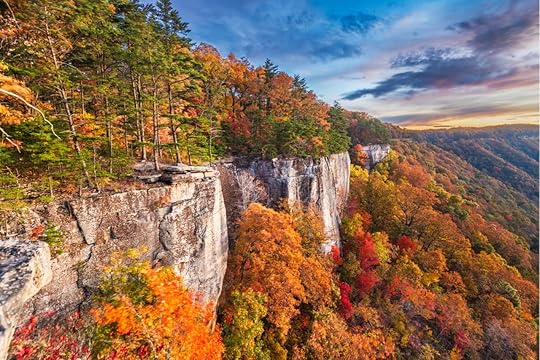
West Virginia announced a new program called Ascend WV that will pay remote workers $12,000 to relocate to the Mountain State. Not only will newcomers get cash, but they’ll also receive a whole year of free outdoor recreation activities. The program stipulates that participants will first need to commit to living in Morgantown, but people can opt to live in either Shepherdstown or Lewisburg at a later stage.
The program’s benefits include a $12,000 payment with no strings attached, a full year of free outdoor recreation activities and gear on public lands, access to free coworking spaces in select towns, invitations to networking events, and the ability to earn a remote work certification through West Virginia University.
West Virginia is known to be one of the best states in the US for outdoor enthusiasts, offering plenty of hiking trails, 2,032 miles of white-water rafting, over 4,000 rock climbing routes, and breathtaking views. The state also has favorable weather conditions year-round, allowing opportunities to get outside and enjoy nature.
Apart from outdoor recreation, the state’s mountain towns have a lot to offer in terms of culture and cuisine, each one with its local specialties. Morgantown is known for its thriving food scene. Lewisburg is regarded as one of the most walkable cities in the US as well as the perfect place to sample craft beer at the many breweries in town. While Shepherdstown is famous for its elegance and historic charm, being named one of the coolest small towns in the US.
To find out more about the plan and the application process, visit the program’s official website. 
The post West Virginia will pay remote workers $12,000 to move there appeared first on Matador Network.

The most epic hikes in Wyoming over jagged peaks, volcanic spires, and sand dunes

Wyoming has some truly bizarre landscapes, from sand dunes that sing (really) to freakish volcanic monoliths that tower over the surrounding desert or grassland flats. It also has some of the most epic backcountry views where rows of jagged peaks bite into the sky and prairie disappears over the distant horizon. While you can drive to a few of the state’s dramatic overlooks, the best way to experience Wyoming’s landscapes is to slip on your hiking boots and hit the trail. Here are nine hikes with epic views in Wyoming for every level of fitness.
1. Devils Tower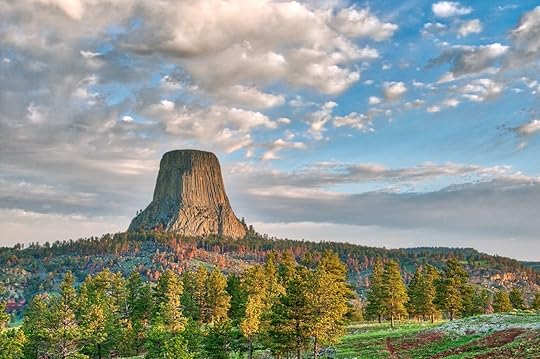
Photo: Sulae/Shutterstock
Most famous for being an alien landing zone in the 1977 film Close Encounters of the Third Kind, Devils Tower, also called Bear Lodge Butte, is a sheer-sided volcanic spire that rises 1,200 feet over the eastern Wyoming prairie. There’s some debate as to whether Devils Tower was formed by an igneous intrusion below layers of rock or a volcano that exploded on the surface. Either way, it’s hard not to be awed by the near-perfect hexagonal columns of rock.
Both the unimaginatively named Tower Trail (1.3-mile paved loop) and the Red Beds Trail (2.8-mile loop) leave from the visitors’ center of Devils Tower National Monument. They both circumnavigate the tower, but Red Beds doesn’t have the crowds, and the views of the tower are better because you’re not constantly hugging the base looking up. With a little distance, you can really get a sense of Bear Lodge Butte’s place within the prairie and rolling ponderosa pine-covered hills. (Bear Lodge Butte is one of the names given to the rock formation by the local Indigenous peoples.)
Wildflowers are abundant, especially in the spring and summer. Even with the crowds, chances are you’ll see deer, wild turkeys, prairie dogs, hawks, and the occasional blue heron. Also watch for rattlesnakes. Around the halfway point, you’ll hit the vibrant red badlands that the trail is named for. These heavily eroded siltstone hills and cliffs hug the Belle Fourche River and look nothing like the rest of the park. There are a few steep, rocky sections on the trail, which may challenge some trail-users and might be almost impassable during one of the area’s frequent afternoon rainstorms.
Bear Lodge Butte has been a sacred place to the Northern Plains’ Indigenous peoples for centuries. You will see small bundles or cloths tied to tree branches along the trails. These offerings show the enduring spiritual connection Native people have to the Butte. Please respect the spiritual nature of the cloths by not touching or moving them, and consider avoiding them in your photos, as it’s a sign of disrespect to many.
Pets aren’t allowed on any of the park trails. The area can be brutally hot in summer, so think twice before bringing your favorite hiking companion to Devils Tower only to leave them in the car.
2. Mount Washburn
Photo: Randall Runtsch/Shutterstock
Mount Washburn stands sentinel in the heart of Yellowstone National Park. At 10,223 feet it has a commanding view of almost every inch of the landscape from the Tetons to the south, the Madison Range in the northwest, and the Absarokas to the northeast. At the top is one of Yellowstone’s three fire lookouts, as well as a small visitor center, restrooms, and one of the best observation decks in the national park system. The lookout provides a 360-degree view of one of the biggest volcanic craters in the world: the Yellowstone Caldera.
The best and most scenic trail to reach the lookout starts from near the crest of Dunraven Pass five miles north of Canyon Junction. Where Chittenden Road grinds to the top in a near straight line, the trail from the Dunraven side wanders a little more than three miles up through lodgepole pine forests and open, grassy slopes. The trail also passes through areas burned by the 1988 wildfires. While the areas have long since regrown, the burns still seem to be carpeted in more wildflowers per square inch than other parts of the park. Toward the top, the trail follows a ridgeline with great views of the east and west.
From the top, along with views of Yellowstone Lake and the deep gash that is the Grand Canyon of the Yellowstone, you can see the faint edge of the giant caldera. Almost 40 miles across, the caldera spans almost the whole center of the park, bisecting Yellowstone Lake. It’s hard to imagine the cataclysmic eruption that lay waste to much of the continental US 640,000 years ago, but being in the center of a crater almost the size of Rhode Island gives you some idea.
3. Cirque of the Towers
amyelizabethroutt/Shutterstock
While the Tetons get most of the front-page glory in the magazine section, the Wind River Range’s Cirque of the Towers is the answer most Wyomingites will give you when you ask for the most picturesque location in the state. Also, the range’s sheer remoteness keeps the crowds at bay.
The first six miles climb an easy grade along the Big Sandy River valley through forest to Big Sandy Lake. From there, you begin to see some of the high country you’re about to enter. It’s just a taste. The trail gets steeper and rockier, and the trees start to dwindle. Peaks close in around the trail, and you could stop at any point from here on and feel perfectly content. The trail crosses Jackass Pass, and then Texas Pass, each bringing a whole new set of craggy peaks that are more beautiful than the last. Nothing really prepares you for the view when you make that last push into the Cirque. It’s like standing in the lower jaw of a gigantic dinosaur, with jagged teeth jutting upward hundreds of feet on three sides.
In good weather, you’ll see teams of climbers dotting the granite faces. But, no matter how many cars you saw in the parking lot, you’ll feel like you have the whole cirque to yourself. You can camp in the Cirque as long as you’re more than a quarter-mile from Lonesome Lake, and if you’re overnighting, this is one of the most spectacular places in the country for night photography.
4. Heart Mountain
Photo: Melanie Hobson/Shutterstock
Heart Mountain sits like an island in a sea of sagebrush several miles off the eastern edge of the Beartooth-Absaroka ranges. While Heart Mountain is often overlooked by tourists, it’s a local favorite. The 360-degree views from the top are extraordinary, taking in the whole of the Bighorn Basin including the Beartooth, Bighorn, and Pryor mountain ranges, as well as the dry folds of the McCullough Peaks to the south.
Heart Mountain is one of the few places in the world where the limestone slab that sits at the top is hundreds of millions of years older than the sediments that support it. The limestone itself is much like the limestones found in Yellowstone National Park some 60 miles to the east, rather than the granite of the nearby Absarokas. How the limestone got there still generates arguments among geologists.
The trail begins in the arid sagebrush foothills nearly equidistant from both Powell and Cody. Most of the mountain is owned by the Nature Conservancy, and you need to sign in at the Heart Mountain Ranch building near the trailhead, but there’s no fee to hike the trail. Dogs aren’t allowed on the trail. From there, the trail climbs 2,400 feet above the basin floor in just over seven miles. The trail is rated at moderate, but there are steep sections especially the further up you go. Make sure you bring plenty of water and sunscreen because there isn’t much shade along the route. Also bring along a native plant guide — the area is home to many rare plant species. In spring and early summer, the wildflower blooms can be almost as impressive as the views from the top. Thunderstorms are a common occurrence throughout the summer, so check the forecast before you head out and start your hike early. You don’t want to be caught on the exposed summit with lightning coming down all around you.
5. Static Divide Peak
Photo: Serge Skiba/Shutterstock
The Tetons are, by far, Wyoming’s most famous mountain range. The Cascade Canyon Trail is nearly as famous as the Tetons themselves, and rightly so. While Cascade earns its reputation with blankets of wildflowers and great views of Teewinot Mountain, it’s also one of the most crowded backcountry trails. The Static Peak Trail offers arguably more spectacular views with far fewer people to share them with.
Make no mistake, this trail is hard. It’s a 16-mile round-trip that climbs over a mile of vertical over grassy meadows, through steep-sided canyons, along alpine lakes, and on a neverending series of switchbacks. Static Peak is one of the few mountains in the Tetons that can be summited without mountaineering skills and equipment. While the hike may take all day, you get all of the beauty of a Teton vista without having to hire a guide.
The views from the top are nothing short of magnificent with glaciated peaks to the north and west and the endless expanse of Wyoming’s deserts to the south and east. The bragging rights for bagging a peak in the Tetons will last almost as long as the memories.
The best time to hit this trail is mid-July through September, with July and August having the longest days and best wildflowers. Those are also the months when the Teton’s legendary late afternoon thunderstorms often roll through. Static Peak gets its name from how often lightning strikes the summit, so get an early start. Storms quiet down through September making it the ideal time to go if you’re a late riser or aren’t the type to charge up the trail at top speed. While you can turn this into a backpacking trip, the logistics of overnighting within Teton National Park’s boundaries add further challenge to an already rugged hike. The added benefit of making this a day trip is carrying a much lighter day pack. Don’t skip bringing lots of water, a water filter, and bear spray. Dogs aren’t allowed on any trails in Tetons National Park.
6. Killpecker Dunes and Boars Tusk
Photo: Flystock/Shutterstock
Killpecker Dunes doesn’t have any trails, exactly. What it does have is miles of towering sand dunes that you can explore where and how you like as long, as it isn’t motorized. Because in order to enjoy one of the most mystifying parts of this area, you’re going to want to get away from the buzz of ATV engines and listen. Killpecker Dunes is one of seven locations in the world with “singing” sand dunes.
Killpecker Dunes is part of Wyoming’s Red Desert, a 9,000-square-mile high altitude desert and sage-dotted grassland. The Dunes cover about 109,000 acres, making them the United States’ largest living dune system. “Living” dunes are ones constantly being shaped and reshaped by the wind, often blowing from one direction during part of the year, then reversing to keep the sand largely in one place. The Dunes seem to stretch into infinity, only broken by bizarre rock formations like the 400-foot Boars Tusk. The Red Desert is home to the largest migrating pronghorn herd in the lower 48, as well as the endangered sage grouse and the rare desert elk. There’s also a surprising amount of plant life for a place made out of shifting sand.
Because the sand particles that make up the dunes are more spherical than most, the Killpecker Dunes create a drone when the sand moves that’s equal parts spooky and relaxing. Imagine a long, low cello note floating over the otherwise silent desert. The “singing” or “booming” is most often caused by wind shifting the sand across the face of the dunes but can also be caused by people or animals displacing the sand by walking or sliding down the dunes. Once you hear the haunting sound, it’s hard to forget.
The Boars Tusk, a 400-foot monolith, towers over the dunes to the southwest and makes a great destination on its own. The Boars Tusk is the core of a volcano that’s been exposed by the erosion of the surrounding layers of rock. There aren’t set hiking trails around the Boars Tusk either, but hiking the three miles to the spire is a good idea. The road is seldom traveled and makes a nice walk as it also circumnavigates the Tusk. If you’ve got a high-clearance vehicle, and the road isn’t wet, you can drive the three miles to the Tusk. Pets are welcome at the Dunes.
7. Cloud Peak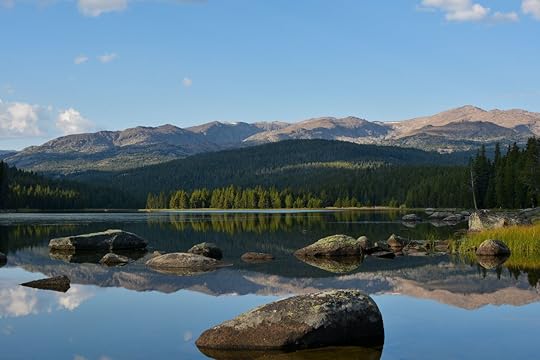
Photo: Realest Nature/Shutterstock
The Bighorn Mountain Range is considered by some to be one of Wyoming’s best-kept secrets, which seems hard to believe, considering the mountains loom over I-25, one of the most traveled roads in the state. Even with all of its exposure to interstate drivers, it’s still surprising to find hardly anyone on one of the best hikes in Wyoming, even in the height of summer.
Cloud Peak, the highest in the Bighorns at 13,171 feet, has the epic views that Wyoming is famous for: chunky glacial peaks, wildflower-choked alpine meadows, and 60-mile views out over the wide-open prairie. It also has the highest topographic prominence in the state, towering 7,077 feet above the valley floor.
The hike starts at the West Tensleep Trailhead. From the trailhead, follow the Misty Moon Trail along West Tensleep Lake to the stream-crossing. From there, the gradual climb will take you through ponderosa and blackjack pine forests, narrow mountain streams, and several lakes. It doesn’t take long to start getting hints of the big views to come. At 10,200 feet, you come upon Misty Moon Lake, one of the most picturesque bodies of water in a state. No one would look down on you for stopping here, rather than picking your way to the summit of Cloud Peak.
You can hook up with the Solitude Loop Trail at Misty Moon Lake and follow it up to where the Cloud Peak Trail cuts north. From there, the climb becomes a 3,000-foot boulder scramble to the top, including a knife-edge ridge that drops away hundreds of feet on both sides. It can feel like a neverending slog at times, but the majestic view from the top makes the scramble worth it. Glacial-green alpine lakes and gleaming snowfields tucked between sharp ridges go on for miles in every direction. In the distance, beyond the craggy mountaintops, prairie disappears over the horizon. While most of Wyoming’s visitors are fighting traffic in Yellowstone and the Tetons, you’ll be alone at the top of the world. Pets are welcome on the trails.
8. Dubois Badlands
Photo: Romina Schwaiger/Shutterstock
The Dubois Badlands Wilderness Study Area is small, just seven square miles of multi-colored desert. What it lacks in size, it more than makes up for in otherworldly landscapes.
Maybe it’s the fact that you’re almost guaranteed not to see another person out there that gives the place its alien feel. There are no signs to indicate it, and in fact, a lot of locals don’t even know it by the BLM’s name, calling it instead Mason Draw, Byrd Draw, or just “the hills east of town.”
The hiking here is as easy or as hard as you want to make it. If you keep to the seemingly endless draws, it’s relatively flat. You can also climb up the steep, eroded hillsides for views of the surrounding areas. As a Wilderness Study Area, there’s no mechanized use allowed. You can bring your dog, though, just make sure you bring plenty of water for both of you, as there are no water sources anywhere. Summers can be scorching, so checking the area out in the morning or evening will be ideal, especially as sunrise and sunset can make the red and orange hillsides appear like they’re on fire. If you’re lucky, you’ll see pronghorn, mule deer, or the occasional bighorn sheep that’s made its way down from the nearby mountains. Keep an eye out for rattlesnakes, especially if you’re hiking with your dog.
9. Gannett Peak via Titcomb Basin
Photo: mgwilmoth/Shutterstock
No list of Wyoming hikes would be complete without Gannett Peak. Not only is Gannett a prestigious mountain for hardcore mountaineers, but what makes it prestigious isn’t the skill level needed to bag the peak but the multi-day approach just to get to the mountain.
Gannett Peak is hunkered deep in the Wind River Range. The Winds are considered the most remote place in the continental US, and Gannett Peak is in the most remote part of the range. There may be whole days where you see no one on the trail. It’s also the most beautiful part of the range, filled with grassy meadows tufted with colorful wildflowers, glacial cirques, towering mountains, and wildlife at the lower elevations, including moose, bear, fox, and elk.
Hiking Gannett is a 50-mile round trip with 9,000 feet of elevation gain before you hit the summit at 13,810 feet. It’s the longest round-trip approach of any state highpoint in the nation, including Denali in Alaska. To add to the challenge, there’s no camping on the mountain, and the glacier is considered dangerous, meaning that your base camp is 3,000 feet below the summit. Be prepared for a 20-hour push from basecamp to summit and back. There’s no route to the summit that doesn’t involve glacier travel and climbing on snow, so it’s even more important than other hikes not to hike alone. If you’re planning on summiting, add extra days to your trip in case of bad weather.
Even though the view from Gannett Peak is arguably one of the best in North America, with glaciated spires, turquoise lakes, and the largest glacier in the lower 48, the climb to get there isn’t for everyone. For a less intense outdoor adventure, only hike the 15 miles into Titcomb Basin. Even though Bonney Pass separates you from the massif of Granite Peak, you still get most of the beauty that you see from the top, but looking up instead of down.
Titcomb Lake lies at the bottom of a steep-sided cirque with jagged peaks vaulting into the sky on all sides. Glacial lakes and free-flowing streams wind down the valley. Even though Titcomb Basin is the most popular of the Gannett Peak approaches, it’s also the most scenic. Crowds in this area might mean seeing one or two other parties during the course of a day. Sometimes, you won’t see anyone. 
The post The most epic hikes in Wyoming over jagged peaks, volcanic spires, and sand dunes appeared first on Matador Network.

New technical problems grounds some Boeing’s 737 Max planes again

Despite being back in service in the United States since December after being grounded for two years, Boeing’s 737 Max is not out of the woods yet. This time, it’s the electrical system in a specific group of 737 Max planes, which will require some planes to be grounded.
Boeing is working with the US Federal Aviation Administration to address the issue, and has recommended 16 airlines temporarily ground the aircrafts concerned while the problem is being investigated. Right now, the 16 affected airlines have not been announced.
According to CNN, the electrical issue could involve a backup to the main power system that powers the plane’s electrical parts. The issue could potentially causes fires, though no actual incidents related to the issue with the electrical system have been reported.
The problem is unlikely to seriously disturb airline operations. Southwest Airlines, which owns the most 737 Max planes, said the issue affects 30 of its 58 jets, so it doesn’t expect much disruption to its flight schedule.
United, which owns 16 of the impacted planes, said, “We are working to swap out aircraft to minimize the impact to our customers. We are in communication with Boeing to understand the timeline for returning the aircraft safely to our fleet. We do not have an estimate right now.”
American Airlines will ground 17 of its 737 Max planes.
All Boeing 737 Max planes were grounded for 20 months, between March of 2019 and November of 2020, after two crashes — caused by a malfunction in the safety system — killed 346 people. 
The post New technical problems grounds some Boeing’s 737 Max planes again appeared first on Matador Network.

Malta offering to pay tourists

According to an official press release from Malta’s Ministry of Tourism, the European island will pay tourists who book at least a three-night stay with select hotels this summer a fixed amount. The stimulus is an effort to jumpstart tourism for 2021.
With three tiers of subsidies, five-star hotel guests will receive 100 euros (about $119), four-star 75 euros (about $89), and three-star hotel guests 50 euros (about $60) per person, per booking. Furthermore, these amounts will be matched by the participating hotels so travelers can earn up to a maximum of 200 euros (about $238), according to a report by Reuters. To qualify for the cashback, travelers need to book directly with the hotel as opposed to third parties, and those who opt to stay on Malta’s island, Gozo, will receive an additional incentive of 10 percent.
The travel subsidy program will officially begin in June as Malta prepares to lift most of its COVID restrictions at the beginning of that month. The duration is set to last until the total budget of 3.5 million euros ($4.16 million) is exhausted.
Malta currently has the highest vaccination rate in all of Europe with 42 percent of adults having already been inoculated. Furthermore, COVID-19 positivity rates have decreased sharply, which is good news for tourism, which comprises a large part of the Mediterranean nation’s economy.
Malta attracts travelers from all over the world with its historic capital city, as well as vast countryside full of charming coastal villages and pristine swimming spots. Visit the tourism board’s website to find out more about this offer and the application process. 
The post The beautiful Mediterranean island of Malta is paying tourists to visit this summer appeared first on Matador Network.

April 12, 2021
This floating luxury hotel generates its own electricity

Floating hotels are popping up everywhere, from Sweden’s Arctic Bath Hotel and Spa to the upcoming Sea Palace Floating Resort in Dubai. This particular floating hotel, however, does more than sit on a body of water — it’s also blazing new trails when it comes to sustainability. The luxury concept, from Turkish design team Hayri Atak Architectural Design Studio (HAADS), adopts a “minimum energy loss and zero waste” strategy, reports CNN.
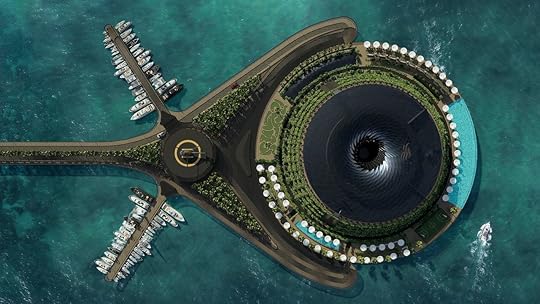
Photo: Hayri Atak Architectural Design Studio
The structure will utilize the water current with wind turbines and tidal power to spin on itself and convert energy into electricity. A computer-controlled system will be used to manage the hotel’s movement. Guests, however, won’t be able to feel their vacation spot spin, as it takes 24 hours for the hotel to rotate 360 degrees.
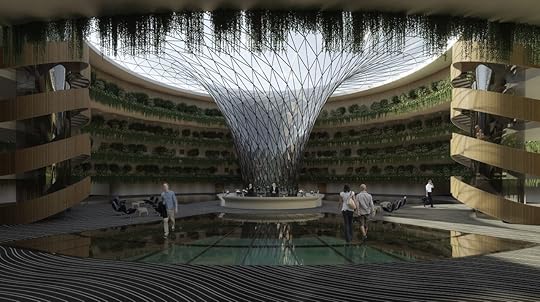
Photo: Hayri Atak Architectural Design Studio
Not only will it generate its own power, but the Eco-Floating Hotel will feature a vortex-shaped roof designed to collect rainwater and reuse it for irrigation and other purposes.
The Eco-Floating Hotel will be located in Qatar, though such a concept could be located anywhere with the right current.
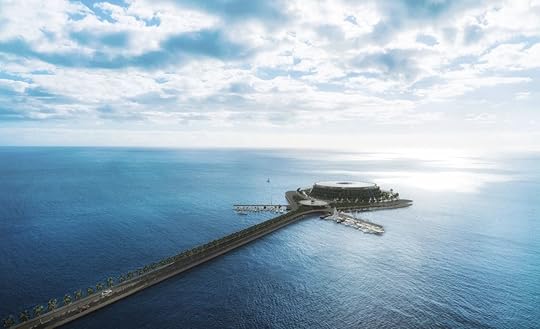
Photo: Hayri Atak Architectural Design Studio
Accessible thanks to a pier connected to the mainland, helicopter, or boat, the hotel will have luxurious amenities typically found at five-star hotels, such as indoor and outdoor pools, a spa, gym, and even a mini-golf course.
The project is still in the design phase but is estimated to be completed in 2025. 
The post This floating luxury hotel generates its own electricity appeared first on Matador Network.

Live and work in St Lucia thanks to the island’s new extended-stay program

If you’ve ever wanted to visit a stunning Caribbean island, now’s the perfect opportunity. The beautiful island nation of St. Lucia is another one of many offering extended stays during the COVID-19 pandemic. The “Live It” program provides travelers and remote workers with the opportunity to turn what might typically be a short vacation into an extended six-week stay (or more) to live like a local.
“In a shorter visit, travelers are limited to a few activities, but if they stay for longer, they get to roam locally, decompress from a year of lockdowns and also work remotely,” said tourism minister Hon. Dominic Fedee. “With so many things to explore safely in St Lucia paired with the demand for extended vacations, we created this immersive program so visitors can live like a local while feeling like a member of the family.”

Photo: NAPA/Shutterstock
Visitors interested in the new program must fill out the free online application. If approved, the participant will be paired with an “approved Live it Island Specialist” who will guide them through flights, accommodation, island activities, and transport.
Travelers don’t need to apply for any permits or visas, and if you fall in love with the island, your tour guide will help arrange an extended stay. The country is excellently suited for remote working with available Wi-Fi all over the island.
Because of the pandemic, all travelers are required to quarantine in a designated hotel for 14 days. Once those 14 days are over, participants are free to explore the island and immerse themselves in the local culture. 
The post Live and work in St Lucia thanks to the island’s new extended-stay program appeared first on Matador Network.

Matador Network's Blog
- Matador Network's profile
- 6 followers



